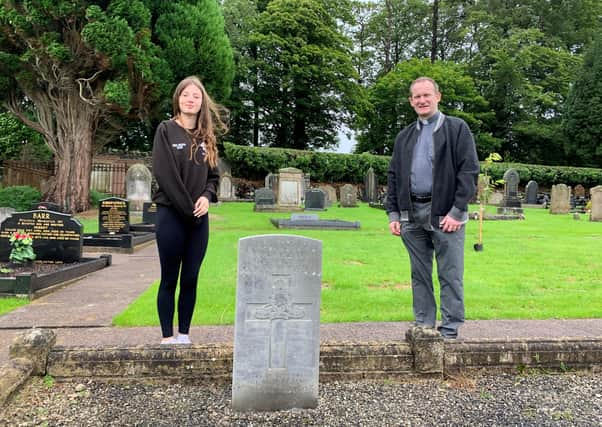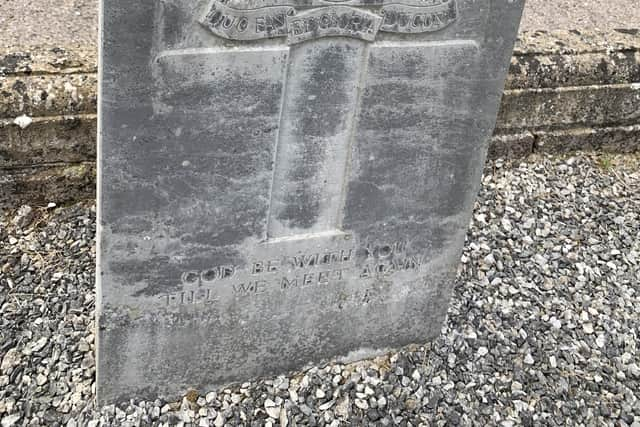Cadets keep memory of fallen Cullybackey soldier alive as VJ Day anniversary approaches


Cadet Lance Corporal Alicia McGorrey and her fellow cadets from Cullybackey Army Cadet Force were fascinated by the story of Gunner John McIlroy Foster and wanted his headstone in Craigs Parish Church to be more fitting of his sacrifice.
Alicia said: “I noticed the headstone had become difficult to read and thought as a fitting tribute I would to clean it to help keep his memory alive.”
Advertisement
Hide AdAdvertisement
Hide AdThe Cullybackey cadets approached both the Commonwealth Graves Commission and parish’s minister Rev Adrian Halligan to gain permission to give his headstone a clean up.


John McIlroy Foster was born on November 14, 1907 – the son of Mary Foster of St Patrick’s Place, Ballymena.
During World War Two he became a gunner in the 261st Battery, 94th Heavy Anti-Aircraft Regiment in the Royal Artillery.
Alicia said: “At the outbreak of war the 94th HAA Regiment was serving under 36th HAA Brigade and was mobilised at Edinburgh.
Advertisement
Hide AdAdvertisement
Hide Ad“The regiment was sent to Egypt in April 1941, not arriving there until June 13.
“It was sent to the desert war zone and served under 12th AA Brigade in the rear areas of the front.
“It remained under the brigade in the desert campaign from November 1941 until January 1943, when it transferred from a short period to 2nd AA Brigade in the Tripoli area.
“It returned to 12th AA Brigade by May 1943 under 8th Army. It then remained in the Middle East, including Palestine and Egypt.”
Advertisement
Hide AdAdvertisement
Hide AdOf Gunner Foster’s death she said: “The 261st Battery saw action at El Alamein and would have been in North Africa when Foster’s life ended on January 10, 1944, aged 36. Military records state he died in the UK and the fact he is buried in Cullybackey suggests he possibly died from old wounds.
“The war ended that day for this Royal Artillery solider and his colleagues of the 94th HAA Regt were placed in suspended animation on July 26, 1944. However, fighting still continued in the Far East until Japan’s surrender on August 15, 1945, which effectively ended the Second World War.”
Gunner Foster earned the War Medal 1939-45 and the 1939-45 Star, awarded as his service was terminated by his death.
The churchyard in which he is buried at Craigs Parish Church in Cullybackey is the final resting place for both WWI and WWII soldiers and has helped the cadets in various other research projects.